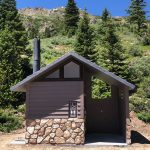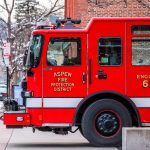NTSB begins investigation into fatal plane crash near Aspen
Two men from New York died Saturday after crash near Midway Pass
National Transportation Safety Board investigators were in the initial stages Monday of looking into the cause of an airplane crash outside of Aspen that claimed the lives of two New York residents Saturday.
“The aircraft crashed in remote mountainous terrain. We are determining how best to access the crash site,” Jennifer Gabris, spokeswoman for the National Transportation Safety Board, said Monday in an email to The Aspen Times.
A ground team from Mountain Rescue Aspen, working with a helicopter from the Colorado Army National Guard in Gypsum, located the wreckage and victims Sunday in response to a call earlier in the morning from a person who reported the flight overdue.
The bodies of both victims — presumably identified as Ruben Cohen and David Zara — were recovered as well.
“It’s (NTSB’s) investigation now,” Pitkin County Sheriff’s Deputy Kent Taylor said Monday. “We’ll provide them with the location and the exact coordinates.”
Cohen and Zara were the only occupants of a Hawker Beechcraft G36 Bonanza that crashed about 9 miles east of Aspen near the Continental Divide shortly after departing for Des Moines, Iowa.
It was not known as of Monday who was piloting the aircraft. Both Cohen and Zara were licensed pilots, according to Federal Aviation Administration records. Cohen received his private pilot certificate Feb. 2, 2020. Zara was a more experienced pilot and most recently in May earned his airline transport pilot certificate, the highest level of pilot certification.
The fixed-wing single-engine aircraft was built in 2007 and most recently owned by LEC Aviation, a limited liability company that Cohen created in April, according to online corporation records from the state of New York. In May, the aircraft was registered under LEC Aviation, which had not recorded any flights until June 29 when the Bonanza went on a 12-minute trip originating from Palo Alto, California, where it also landed, according to flightaware.com.
Following two more short flights of 31 and 13 minutes on Friday, the Bonanza took off from Napa, California, at 7:32 a.m. Saturday and touched down at Aspen-Pitkin County Airport at 1:53 p.m., both times local.
The 899-mile flight preceded the Bonanza’s next mission, which departed from the Aspen airport 6:24 p.m. that day for what was supposed to be a 732-mile flight to Des Moines.
Yet less than 14 minutes into the flight, the Bonanza crashed topping out at 10,950 feet near Midway Pass, according to flightaware.com. Midway Pass has a maximum altitude of 12,140 feet and is in the Hunter-Fryingpan Wilderness.
Dallas pilot and flight instructor Robert Katz, who monitors airplane crashes, likened Saturday’s incident to the Oct. 5 aviation tragedy near Telluride where newlyweds Costas John Sivyllis and Lindsey Vogelaar were killed.
“Both of these incidents were preventable,” Katz said.
Sivyllis, a pilot and flight instructor for United Airlines, was operating a Beechcraft S35, also a single-engine Bonanza like the one that went down Saturday. As well, Sivyllis’s Bonanza crashed shortly after takeoff from the Colorado ski town while on its ascent. They were on their way home to Florida.
Katz noted pilots of both aircraft chose the more direct, mountainous flight routes before realizing it was too late.
“In places like Telluride and Aspen, there are specific paths or routes that have to be flown where the terrain is lowest,” he said, “and the pilot in this type of aircraft cannot deviate from that path.”
The NTSB will publish preliminary report on the Aspen-area crash within 15 days of Saturday, according to the email from Gabris.
“Once on scene, investigators will begin the process of documenting the scene and examining the aircraft,“ the email said. ”Part of the investigation will be to request radar data, weather information, air traffic control communication, airplane maintenance records and the pilot’s medical records. NTSB investigators will look at the human, machine and the environment as the outline of the investigation.”
The entire investigation could take as long as two years.
“At this early stage of an investigation, NTSB does not state a cause but will provide factual information when available,“ Gabris’ email said. ”Investigations involving fatalities, and other major investigations currently take between 12 and 24 months to complete; other investigations take between 12 and 18 months, on average.“
Injured skier has ‘incredible’ self-rescue below Castle Peak
There wasn’t much Marieta Bialek and Austin Zedak were concerned about.










